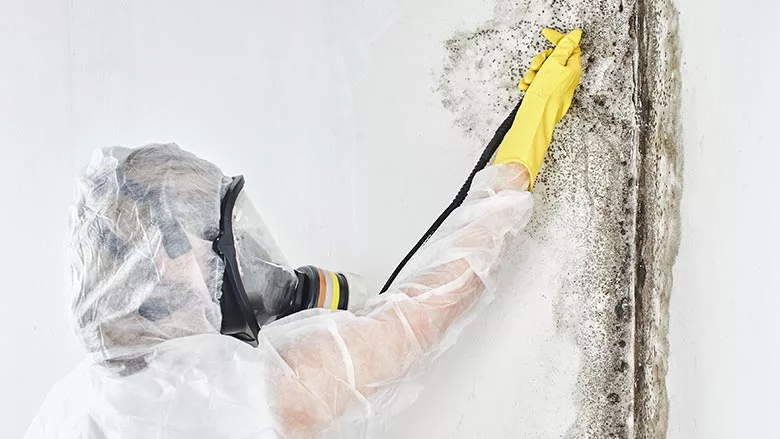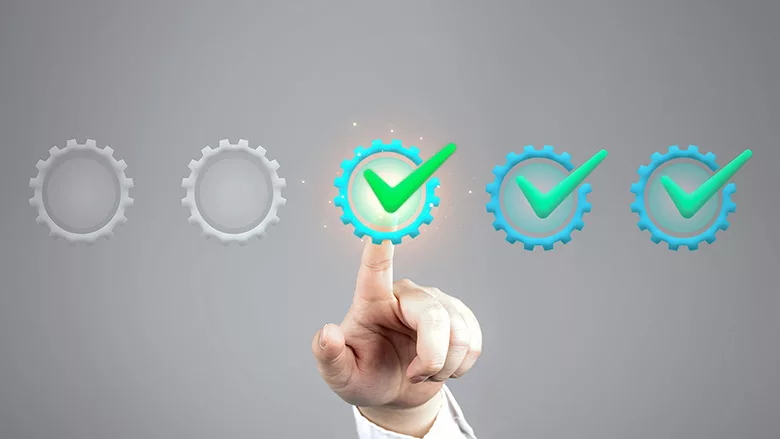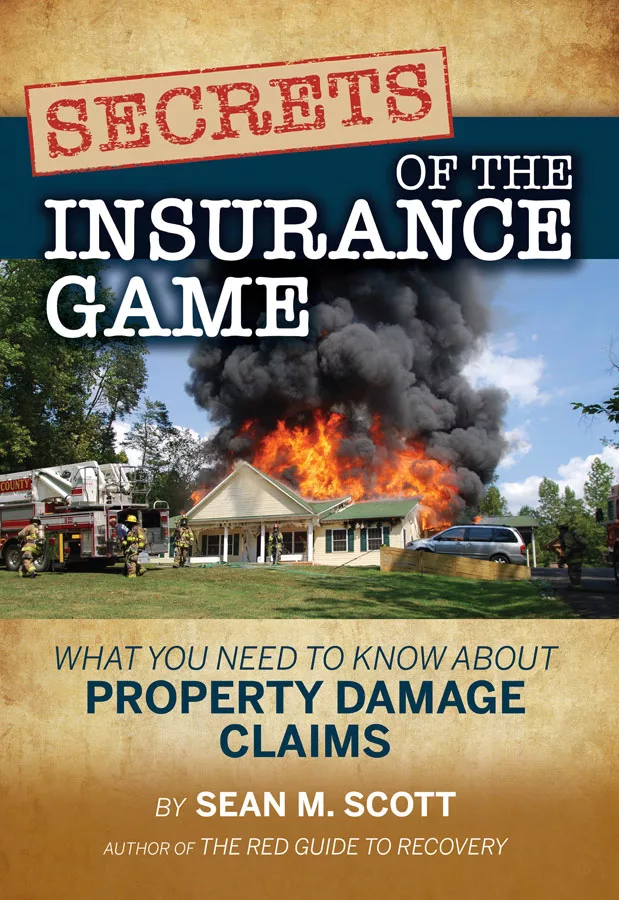The How, Where, When and Why of Thermography

Moisture. It’s everywhere and, like with many things, good when properly balanced. But when there is too much moisture in buildings, it can take facility managers down a trail of costly material deterioration and mold growth on to unsafe living or working conditions. If elevated moisture levels are detected, building owners will want them returned to acceptable levels.
Tom Rochenski has been a product and distribution manager in the restoration market for over 8 years. Currently residing at Extech Instruments and FLIR Systems, Tom contributes to the design, development, and sales of test and measurement instruments and infrared cameras geared for the restoration and remediation professional, so it seemed only natural to put a few questions to him about the science of thermography and how professionals can best utilize this technology without becoming overwhelmed.

Tom Rochenski: Thermography, also known as thermal imaging or infrared imaging, is a technology used to monitor and actually see the temperatures or heat signature of all objects. Thermography is a quantum leap forward from the familiar laser infrared thermometer. An “IR thermometer gun” gives you an average temperature reading of just an individual spot, typically an inch in diameter.
Instead of a numerical readout, a handheld thermal imager or infrared camera provides a thermogram, an actual picture that uses color palettes to illustrate temperature variations. For example, an infrared image of a wall may show cold spots as dark blue while warmer spots are red, with a rainbow of incremental colors in between.
It’s a fast and incredibly accurate way to identify the full extent of moisture damage because water-damaged areas are typically colder than dry areas of comparable material so they jump right out in the thermal image.
For restoration professionals, moisture meters often take center-stage because they are invaluable for precisely monitoring moisture levels. Using one to find the true scope of water damaged building materials however requires a lot of legwork. Instead, a quick scan of a wide area using an IR camera will give you a picture of exactly where moisture is found. This is tremendously helpful for getting a fast start on a job; for literally giving a customer a tangible, easy-to-understand big picture of the scope of a job and its progress; and for validating a complete dry-out before leaving a job.
Thermography is here to stay in the arsenal of restoration technologies. As thermal imagers become more affordable and easier to use, they’ve become a must-have for restoration professionals who want to stand out from the competition.
Many customers, restricted by the time constraints of urgent circumstances, will not shop around extensively for a restoration contractor. But when they do, it is invaluable to use infrared to differentiate yourself from others, telling customers: “Be sure you ask any other companies you talk to if they are using thermal imagers. If they’re not, they’re not operating at the state-of-the-art.”
R&R: What’s the biggest misconception about thermography and thermal imaging?
TR: Aside from Hollywood capitalizing on the popular notion that thermography can be used to find ghosts? Well, there are a few major misconceptions worth mentioning. Another idea fueled by Hollywood special effects is that infrared imagers work like X-ray vision and that they can “see through walls.” That expression is a big No-No.

That raises another significant misconception: a thermal imager is used to find moisture accurately but you’re not actually seeing the moisture on its screen. You’re seeing the lower temperatures caused by the evaporative cooling of the water present. We’re all guilty of collapsing this distinction and it may sound like splitting hairs. But it is important to remember because other factors can present cool spots in a thermal image.
For example, a poorly insulated HVAC duct in a wall or ceiling can leak cooled air which will appear on a thermal image. A wall cavity with missing or failed insulation can appear cold in the winter and while this may increase the risk of condensation on the wall surface, it is not the same as outright water damage. With practice and familiarity, along with the use of a multi-function moisture and environmental meter, it becomes easier to discern the shape of an un-insulated eave versus the amorphously spreading pattern of water from a broken pipe.
Similarly, some users over-promise that a thermal imager can be used to find mold. False. As with the above notions, it can find an area where abnormally cooler temperatures are present. With the right mix of humidity and ambient temperature, that location could become a hospitable environment for mold.
So, can it find conditions conducive for mold hazards? Yes. Can it find mold? No.
R&R: You’re a manufacturer of IR cameras, so it’s too obvious not to ask: what’s the biggest change you’ve seen in the past 5 years with regard to the “average” purchaser of thermal imagers?
TR: The biggest change in the average user is that, simply put, he or she is more average than ever before. What I mean to say is that thermal imagers, as recently as 5 years ago, were considered the domain of a specialized group of people, dedicated thermographers as well as early adopters. These dedicated men and women are fantastically knowledgeable in thermography in relation to building sciences, electrical diagnostics, energy audits and other specialties. They possess various levels of certifications and they eat, sleep, and drink thermography.
What has happened over the last half-decade is that, as with other high-end technologies like GPS, high-definition TV, and smartphones, the cost and complexity of thermal imagers has come down dramatically. This lower cost of entry and increased ease-of-use has made the category more accessible to more professionals than ever, in a broader range of industries.
While newer, powerfully advanced models remain the domain of thermographers, thermal imagers as a whole are becoming more of a “distributed tool.” Technology that once cost $10,000 and up is now available for a fifth of that cost. Plus, a range of $1,200-$2,000 models have created the category of affordable “toolbox infrared cameras” with upgraded capabilities.

R&R: There’s been much made about the documentation aspect of thermal imagers, as well as the impact they can make on a company’s liability, or potential liability, with regard to insurance and even court issues. How so?
TR: They say pictures are worth a thousand words. In the case of infrared images, they are worth thousands of pixels of temperature data. We often discuss the value of thermal imagers as a tool for finding problems when you first arrive at a restoration job. In truth, the “big picture” they provide extends from start to finish, from first finding the extent of water damage, to monitoring the progress during restoration work, to validating that dry conditions are restored at the end of a job before pulling equipment.
Many mid-level and premium thermal imagers also take simultaneous visible light images with a built-in digital camera, helping to add context and ease-of-understanding to thermal images without toting around a separate camera, and ensuring that both images are properly matched pairs.
This opportunity for substantial documentation is relatively new to the restoration industry. Not only is it useful tactically and for improving customer service by providing visual updates, it serves as a vital tool to chronicle an archive of proof of effective drying. By introducing an instrument that provides empirical findings to a legal case, it’s no longer as simple as your word against theirs.
Some infrared cameras take their documentation capabilities a step further by imprinting moisture meter readings beamed to the camera by Bluetooth. This helps further bolster the findings in the image, by validating that the moisture spots indicated by colder temperature conditions are in fact due to moisture not other factors. These tools can offer an added measure of protection and advocacy in cases of liability, insurance disputes, and hearings.
R&R: In your experience, what are the top three things people ask about when they’re looking for an IR camera? Along those same lines, what’s the one thing they don’t ask about that they really should?
TR: The fast-changing world of consumer electronics keeps us on a path to constantly upgrade our devices. With digital cameras, everyone is on a quest for more megapixels. And so it is with infrared cameras, users want more pixels, albeit on a different scale. People instinctively ask about resolution. And they should: more pixels means more details and better temperature data for diagnostic decisions.

More and more infrared camera users are not dedicated thermographers. The camera is there to help them get things done, like drying out a flooded basement family room. But they still need to know how to use their camera. So, questions arise about ease of use right out-of-the-box: How quickly can I go from zero to sixty in terms of familiarity with its functions and proper operation? How intuitive are the controls? How easy will it be for me to email my client or an insurance company with a picture they can open up right in their email (without specialized software)? Can my camera talk to my iPhone or iPad? Can I build a PDF report right on the camera? Newer capabilities that improve usability are going hand-in-hand with improved productivity.
Infrared camera companies are looking at ways to flatten the learning curve. IR cameras are easier than ever to use. Users can develop a pragmatic level of proficiency with free and advanced online training, as well in-class or on-site training.
While users are dazzled by increasingly bigger image resolution, one possibly more important factor which few people ask about is thermal sensitivity. Measured in milliKelvins (mK) or as a measure of resolution found at a standard temperature point (e.g., <0.045°c at 30°C), the smaller the value of a thermal imager’s sensitivity, the more sensitive the camera. Better thermal sensitivity improves the contrast in temperature differences, helping to better isolate problem areas with crisper, more detailed images.
It’s not a transferable concept that you also talk about at Best Buy and it’s difficult to understand. As a result, it is most overlooked by thermal imager customers.
R&R: Prices for IR cameras/thermal imagers have come down dramatically in the past 5 years, while features and options have steadily improved. What do the next 5 years hold, technologically speaking?
TR: We have come a long way in terms of innovations for diagnostics, reporting and productivity. In the future, infrared technology will become increasingly accessible in terms of connectivity. We’ll tackle the question, “How can we connect our infrared cameras to ubiquitous devices--and the cloud--in order to share IR images and findings?
Look for capabilities that help technicians do more with their infrared images. That will benefit restoration consumers with richer, more informed customer relations for example.
In terms of driving innovation in the long term, look for a bold re-envisioning of thermal imagers. It will take a daring, fresh start approach to accommodate exciting new technologies on the horizon.
Looking for a reprint of this article?
From high-res PDFs to custom plaques, order your copy today!





